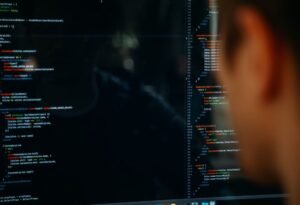Film Vocabulary
Whether you’re a cinephile or a casual moviegoer, understanding film vocabulary can enhance your experience and appreciation of the art form. From technical terms to industry jargon, this primer will provide you with a foundation to better understand the world of film.
Key Takeaways:
- Understanding film vocabulary can enhance your movie experience.
- Technical terms and industry jargon can be confusing, but learning them can deepen your appreciation of the art form.
- Awareness of film vocabulary allows for more effective communication and analysis of movies.
Genre
Genre refers to distinct categories or types of films that share similar themes, styles, and narrative structures. *The horror genre, known for its ability to elicit fear and suspense, has a devoted fan base.* Common genres include comedy, drama, action, romance, thriller, and documentary.
Aspect Ratio
Aspect ratio represents the proportional relationship between the width and height of a film’s frame. It is typically expressed as a ratio, such as 1.85:1 or 2.35:1. *The shift from the standard 4:3 aspect ratio to widescreen formats revolutionized the way films are presented on the big screen.*
Table 1: Common Aspect Ratios
| Aspect Ratio | Description |
|---|---|
| 1.33:1 | Standard (fullscreen) |
| 1.85:1 | Widescreen (commonly used in dramas and comedies) |
| 2.35:1 | Cinemascope (commonly used in epic films and blockbusters) |
Tracking Shot
A tracking shot, also known as a dolly shot, involves moving the camera on a track to follow the subject or create a sense of movement within a scene. *Tracking shots can add dynamism and immerse viewers in the action.* This technique can be used to emphasize a character’s journey or highlight the surroundings in a visually captivating way.
Montage
A montage is a cinematic technique where a sequence of short shots is edited together to condense time, convey information, or evoke emotions. *Famous for its use in Rocky, the training montage has become a staple in sports films.* Montages are effective in showcasing character development, skill progression, and the passage of time in an engaging and efficient manner.
Table 2: Types of Montages
| Type | Description |
|---|---|
| Action Montage | Rapid succession of shots during action-packed sequences |
| Character Montage | Highlighting the growth and transformation of a character |
| Parallel Montage | Showcasing separate but related events happening simultaneously |
Jump Cut
A jump cut is an abrupt transition between two shots of the same subject, resulting in a jarring or discontinuous effect. *Introduced by French New Wave filmmakers, the use of jump cuts challenges traditional continuity editing.* Jump cuts can convey the passage of time or create a sense of unease or disorientation for artistic and narrative purposes.
Table 3: Jump Cut in Cinema
| Film | Director |
|---|---|
| A Hard Day’s Night | Richard Lester |
| Breathless | Jean-Luc Godard |
| Trainspotting | Danny Boyle |
Conclusion
By familiarizing yourself with film vocabulary, you can enrich your movie-watching experience and better appreciate the artistic choices made by filmmakers. From genres and aspect ratios to tracking shots and jump cuts, these terms unlock a deeper understanding of cinema’s language.

Film Vocabulary
Common Misconceptions
There are several common misconceptions surrounding film vocabulary. Many people misunderstand certain terms or concepts related to the film industry. It is important to clarify and debunk these misconceptions to have a better understanding of the topic.
- Camera “zoom” means moving the camera closer or farther away from the subject, rather than using the lens to manipulate the image size.
- Aspect ratio refers to the proportional relationship between the width and height of a movie frame, not the physical size of the screen.
- Montage is not simply a sequence of random shots; it refers to a carefully constructed sequence that creates meaning by juxtaposing images together.
Another misconception is the belief that cinematography and camera operation are the same thing. While closely related, cinematography is the art of lighting, framing, and creating the visual language of a film, while camera operation involves the technical aspect of physically operating the camera.
- Contrary to popular belief, a storyboard is not a comic book version of a film. It is a visual representation of each shot or sequence in a film, allowing the director to plan the visual composition and flow of the story.
- Continuity editing is not about filming in chronological order; it is a technique used to ensure that shots from different angles and takes are edited together seamlessly to create an uninterrupted and coherent visual narrative.
- The term “mise-en-scène” does not only refer to the set design or physical elements on screen but encompasses all the elements that contribute to the overall visual and emotional impact of a scene, including lighting, costumes, props, and the positioning of actors.
One misconception is that a film’s “director of photography” (DP) is the same as the camera operator. While the DP oversees the artistic and technical aspects of cinematography, the camera operator is responsible for physically operating the camera during a shoot.
- A “tracking shot” is not just a shot that follows a subject moving across the frame; it refers to a camera movement that physically moves the camera through a scene to create a sense of motion and spatial awareness.
- Post-production editing is not just about removing mistakes or adding visual effects. It involves the overall process of assembling and manipulating footage, sound design, color grading, and adding visual effects to enhance the storytelling.
- The term “mise-en-scène” is often misused to solely describe the staging or arrangement of actors in a scene. While staging is one aspect, mise-en-scène encompasses all visual elements that contribute to the overall aesthetic and meaning of a scene.
Lastly, there is a common misconception that sound design is only about creating realistic sound effects. In reality, sound design plays a crucial role in storytelling by manipulating and enhancing audio elements to evoke emotions, create atmosphere, and guide the audience’s attention.
- The term “pan” does not refer to taking a panoramic photograph or capturing a wide-angle shot. In film vocabulary, a pan is a horizontal camera movement from one point to another, typically following a subject across the frame.
- Screenwriting is not just about writing dialogue. It involves constructing the overall narrative structure, creating engaging characters, and crafting the visual language and pacing of a story, all of which play important roles in the filmmaking process.
- The term “montage” is often misinterpreted as a collection of unrelated scenes. In actuality, montage refers to the editing technique of combining multiple shots or sequences to convey an idea or concept that may not be achievable with a single shot alone.

Film Vocabulary: A Guide to Essential Terms
Understanding the language of cinema is key to fully immersing oneself in the world of film. From technical jargon to artistic concepts, this article aims to provide a comprehensive overview of film vocabulary. The following tables showcase various elements related to movie production, storytelling techniques, and cinematic devices, offering insights into this fascinating realm of storytelling.
The Many Shots of a Film
A single scene in a film can be composed of several shots, each serving a unique purpose. Here are different types of shots commonly used by filmmakers:
| Shot | Description |
|---|---|
| Long Shot | A shot taken from a considerable distance, typically showing the subject in full. |
| Close-up | A shot that captures a small portion of the subject, focusing on specific details. |
| Over-the-Shoulder Shot | A shot taken from behind one character, showcasing the perspective of another character. |
| Bird’s Eye View | A shot taken from directly above, providing a wide-angle perspective of the scene. |
| Point-of-View Shot | A shot that simulates the viewpoint of a character, creating an immersive experience for the audience. |
Character Archetypes in Film
In storytelling, characters often embody distinctive archetypes, which add depth and complexity to the narrative. Here are some common character archetypes found in films:
| Archetype | Description |
|---|---|
| The Hero | A courageous character who embarks on a journey to overcome obstacles and achieve a goal. |
| The Villain | An antagonist who opposes the hero, creating conflict and tension within the story. |
| The Mentor | A wise character who guides the hero and imparts valuable knowledge or advice. |
| The Sidekick | A loyal companion to the hero, providing support and comedic relief throughout the storyline. |
| The Femme Fatale | A seductive character, often with ulterior motives, who manipulates the protagonist. |
Color Symbolism in Film
Color plays a pivotal role in visual storytelling, conveying emotions, themes, and symbolism. Explore how different colors are commonly used:
| Color | Symbolism |
|---|---|
| Red | Passion, love, anger, or danger |
| Blue | Calmness, sadness, or melancholy |
| Yellow | Optimism, happiness, or betrayal |
| Green | Nature, growth, or envy |
| Black | Mystery, death, or power |
Methods of Film Editing
The art of film editing is crucial in shaping the narrative and creating a cohesive cinematic experience. Here are various techniques employed by film editors:
| Editing Technique | Description |
|---|---|
| Jump Cut | An abrupt cut between two shots that creates a jarring effect or highlights a specific moment. |
| Cross-Cutting | Interweaving two or more separate scenes to build tension or create parallel narratives. |
| Montage | A rapid sequence of shots, often used to condense time or convey a character’s emotional state. |
| Match Cut | A seamless transition between two shots based on visual similarities or thematic connections. |
| Slow Motion | Reducing the speed of a shot to intensify dramatic moments or emphasize details. |
Famous Film Genres
Film genres categorize movies based on their narrative structure, themes, and stylistic elements. Discover popular film genres:
| Genre | Description |
|---|---|
| Drama | An emotional genre centered on interpersonal conflicts and character development. |
| Comedy | A humorous genre intended to entertain and provoke laughter through witty dialogue and comedic situations. |
| Horror | A genre that evokes fear and suspense, often featuring supernatural or terrifying elements. |
| Science Fiction | A genre exploring futuristic or speculative concepts, often incorporating advanced technology and otherworldly settings. |
| Action | A genre characterized by thrilling physical stunts, intense fights, and daring adventures. |
Iconic Film Quotes
Memorable lines of dialogue have the power to resonate with audiences for years. Here are some unforgettable quotes from iconic films:
| Quote | Film |
|---|---|
| “Here’s looking at you, kid.” | Casablanca (1942) |
| “May the Force be with you.” | Star Wars (1977) |
| “I’ll be back.” | The Terminator (1984) |
| “You can’t handle the truth!” | A Few Good Men (1992) |
| “Life is like a box of chocolates; you never know what you’re gonna get.” | Forrest Gump (1994) |
Academy Award Winners for Best Picture
The Academy Award for Best Picture recognizes the finest cinematic achievements of each year. Here are recent winners of this prestigious award:
| Year | Film |
|---|---|
| 2016 | Moonlight |
| 2017 | The Shape of Water |
| 2018 | Green Book |
| 2019 | Parasite |
| 2020 | Nomadland |
Top-Grossing Films of All Time
Box office success is a testament to a film’s popularity and widespread appeal. Here are some of the highest-grossing films in history:
| Film | Year | Box Office Revenue |
|---|---|---|
| Avengers: Endgame | 2019 | $2,798,000,000 |
| Avatar | 2009 | $2,790,439,000 |
| Titanic | 1997 | $2,194,439,542 |
| Star Wars: The Force Awakens | 2015 | $2,068,223,624 |
| Avengers: Infinity War | 2018 | $2,048,359,754 |
Cinematic Innovations That Revolutionized Film
Throughout history, significant technological advancements and creative innovations have transformed the landscape of cinema. Here are some transformative moments in film:
| Innovation | Year | Description |
|---|---|---|
| Talking Pictures | 1927 | The introduction of synchronized sound revolutionized the film industry, giving rise to the “talkies.” |
| Technicolor | 1932 | A color film process that brought vibrant hues to the silver screen, captivating audiences worldwide. |
| Computer-Generated Imagery (CGI) | 1973 | CGI opened new possibilities in visual effects, enabling filmmakers to realize stunning and impossible scenes. |
| Virtual Reality (VR) | 1985 | VR technology changed the way audiences experience movies, offering immersive and interactive narratives. |
| Streaming Services | 2007 | The advent of streaming platforms transformed how people consume films, providing instant access to a vast library of content. |
In this exploration of film vocabulary, we have delved into the diverse elements that contribute to the magical world of cinema. From the art of cinematography to the impact of technological advancements, each aspect plays an essential role in shaping the movies we love. Whether it’s the iconic quotes, the unforgettable characters, or the breathtaking visuals, film vocabulary allows us to appreciate the rich and varied tapestry of storytelling on the silver screen.
Frequently Asked Questions
What is a film script?
A film script, also known as a screenplay, is a written document that outlines the story, dialogue, and actions of a film. It serves as a blueprint for the director, actors, and crew, providing them with instructions on how to bring the story to life on screen.
What is a film director?
A film director is the creative force behind a film, responsible for making decisions related to storytelling, visual style, and performance. They work closely with the cast and crew to bring the script to life and ensure that the film stays true to their artistic vision.
What are camera angles and shots in filmmaking?
Camera angles and shots refer to the positioning and movement of the camera in relation to the subject matter. Different angles and shots can evoke different emotions and perspectives in the audience. Examples include close-ups, wide shots, and overhead shots.
What is film editing?
Film editing is the process of selecting, arranging, and manipulating video and audio footage to create a coherent and engaging final product. It involves cutting and splicing scenes, adding transitions, and enhancing the overall flow and rhythm of the film.
What is a film genre?
A film genre categorizes films based on shared themes, settings, and storytelling conventions. Examples of film genres include action, comedy, drama, sci-fi, and horror. Genres help viewers identify and choose films that align with their preferences.
What is a film score?
A film score refers to the music composed and recorded specifically for a film. It enhances the mood, underscores important scenes, and helps convey emotions to the audience. Film scores can be orchestral, electronic, or a blend of various musical elements.
What is film distribution?
Film distribution involves the process of making a film available for audiences to watch. It includes securing theatrical releases, negotiating distribution deals with streaming platforms, and organizing home video releases. Distribution ensures that the film reaches its intended audience.
What is film cinematography?
Film cinematography is the art and technical process of capturing images on film or digital media. It encompasses the use of cameras, lenses, lighting, and composition to create visually striking and meaningful shots that contribute to the overall storytelling.
What is film production?
Film production encompasses all stages of making a film, from script development and financing to shooting, editing, and marketing. It involves coordination between various departments, such as production, direction, art design, costume, and sound, to bring the film to completion.
What is film distribution?
Film distribution involves the process of making a film available for audiences to watch. It includes securing theatrical releases, negotiating distribution deals with streaming platforms, and organizing home video releases. Distribution ensures that the film reaches its intended audience.




